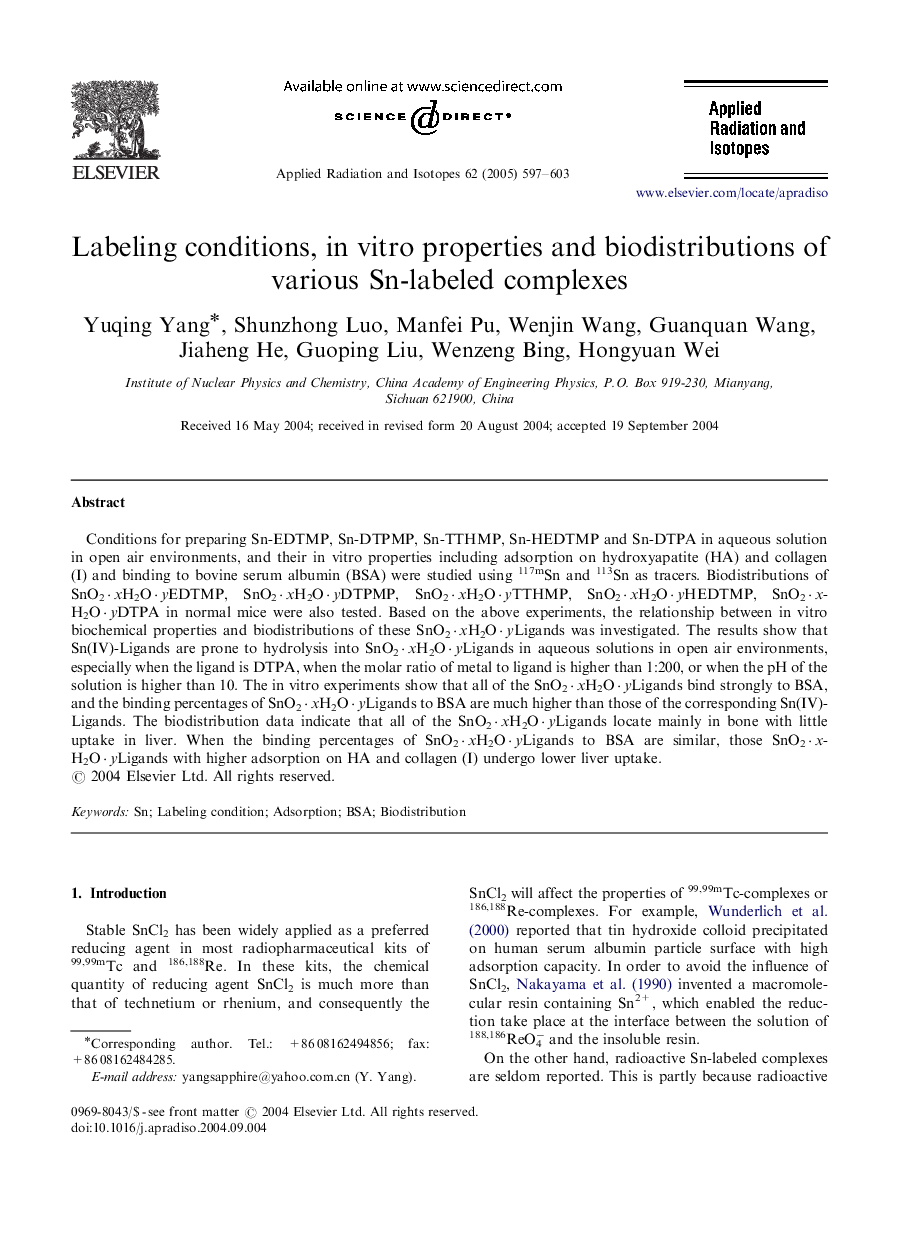| Article ID | Journal | Published Year | Pages | File Type |
|---|---|---|---|---|
| 10730198 | Applied Radiation and Isotopes | 2005 | 7 Pages |
Abstract
Conditions for preparing Sn-EDTMP, Sn-DTPMP, Sn-TTHMP, Sn-HEDTMP and Sn-DTPA in aqueous solution in open air environments, and their in vitro properties including adsorption on hydroxyapatite (HA) and collagen (I) and binding to bovine serum albumin (BSA) were studied using 117mSn and 113Sn as tracers. Biodistributions of SnO2·xH2O·yEDTMP, SnO2·xH2O·yDTPMP, SnO2·xH2O·yTTHMP, SnO2·xH2O·yHEDTMP, SnO2·xH2O·yDTPA in normal mice were also tested. Based on the above experiments, the relationship between in vitro biochemical properties and biodistributions of these SnO2·xH2O·yLigands was investigated. The results show that Sn(IV)-Ligands are prone to hydrolysis into SnO2·xH2O·yLigands in aqueous solutions in open air environments, especially when the ligand is DTPA, when the molar ratio of metal to ligand is higher than 1:200, or when the pH of the solution is higher than 10. The in vitro experiments show that all of the SnO2·xH2O·yLigands bind strongly to BSA, and the binding percentages of SnO2·xH2O·yLigands to BSA are much higher than those of the corresponding Sn(IV)-Ligands. The biodistribution data indicate that all of the SnO2·xH2O·yLigands locate mainly in bone with little uptake in liver. When the binding percentages of SnO2·xH2O·yLigands to BSA are similar, those SnO2·xH2O·yLigands with higher adsorption on HA and collagen (I) undergo lower liver uptake.
Keywords
Related Topics
Physical Sciences and Engineering
Physics and Astronomy
Radiation
Authors
Yuqing Yang, Shunzhong Luo, Manfei Pu, Wenjin Wang, Guanquan Wang, Jiaheng He, Guoping Liu, Wenzeng Bing, Hongyuan Wei,
